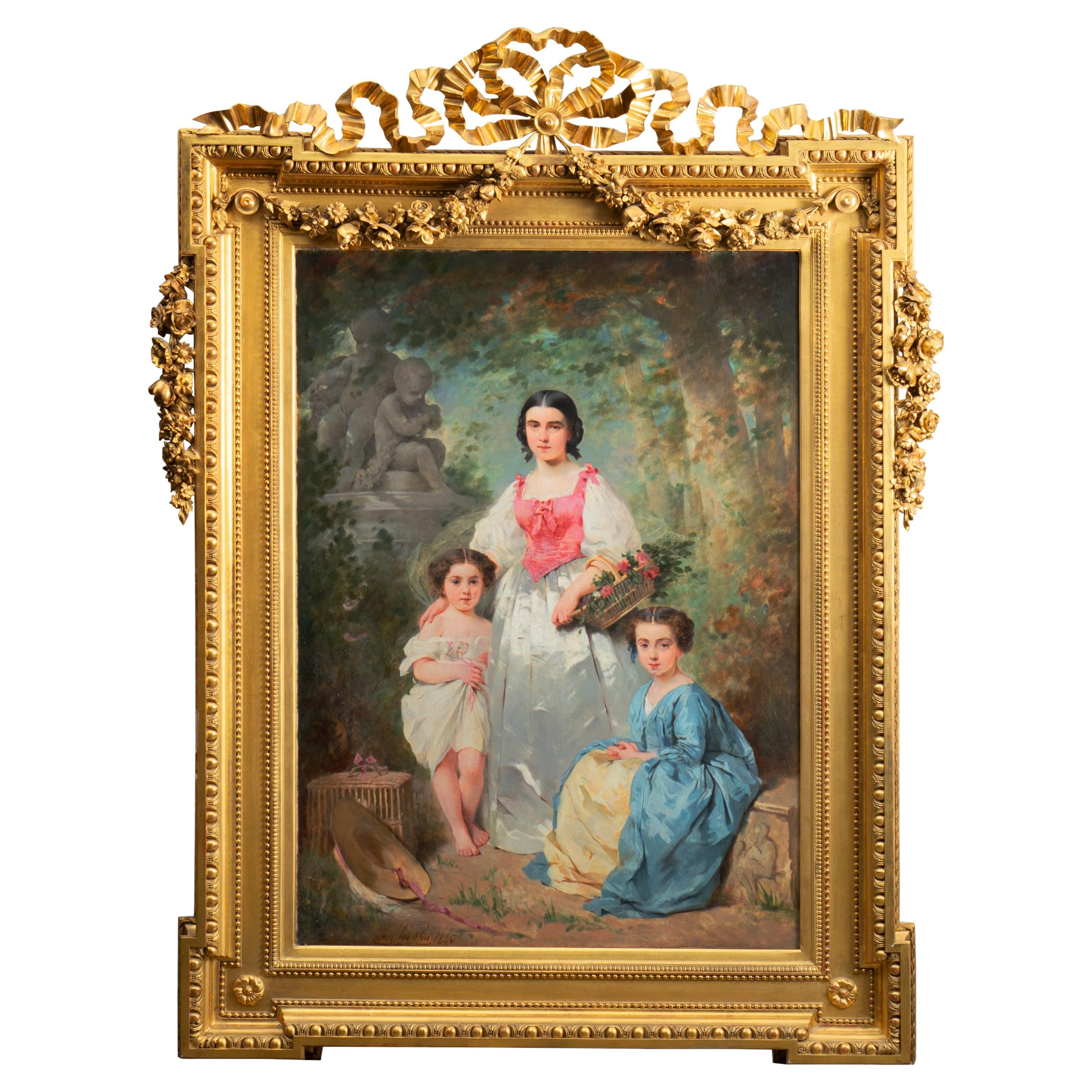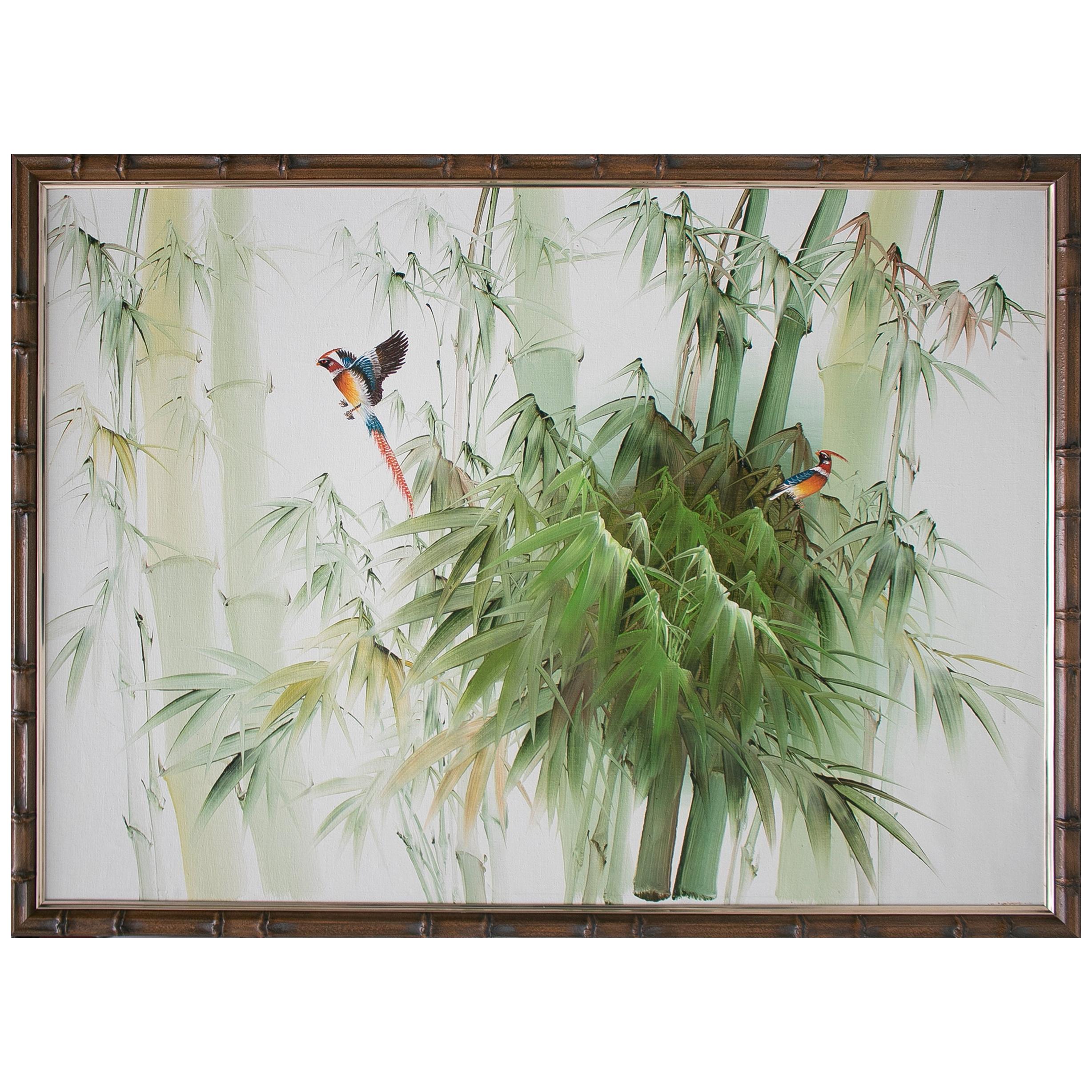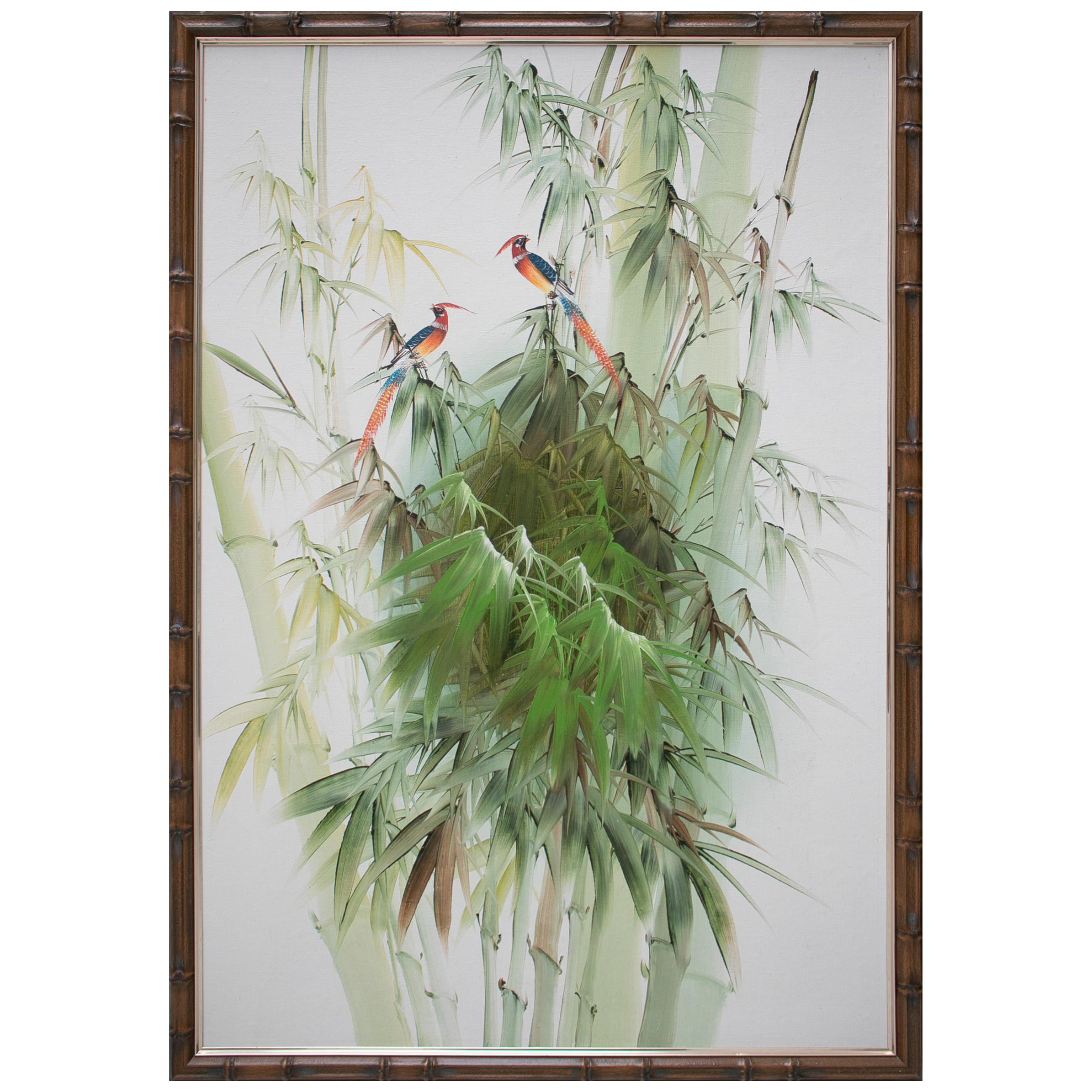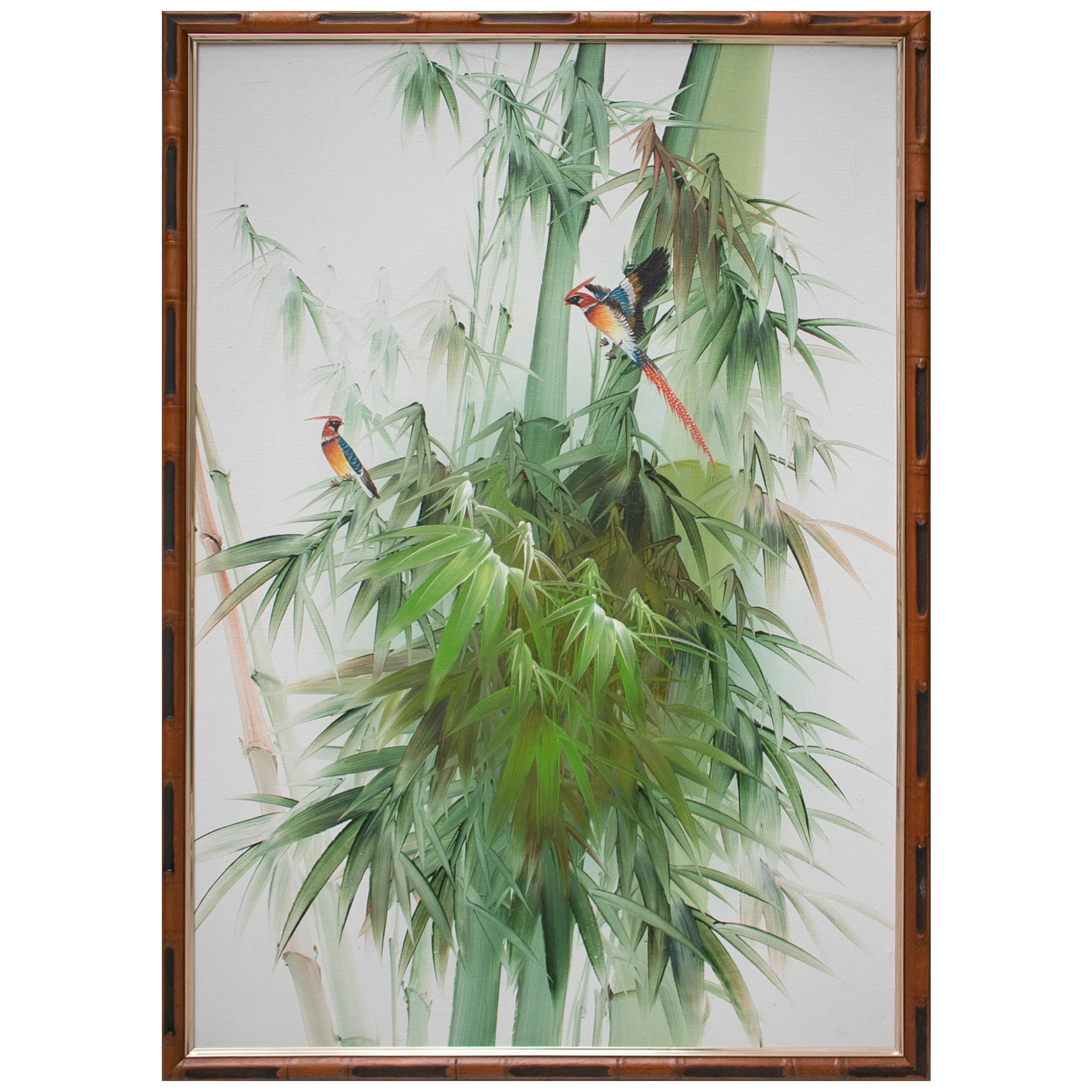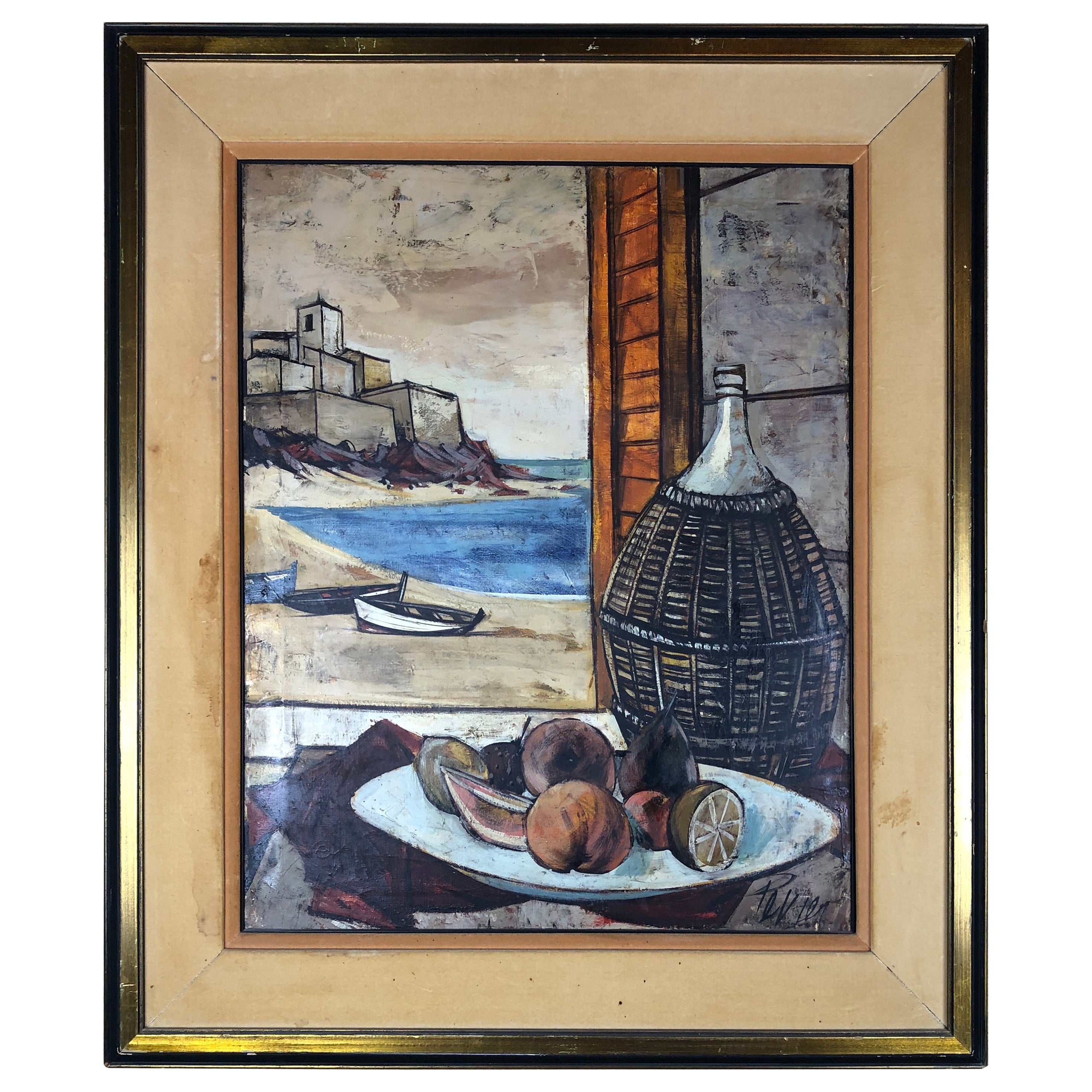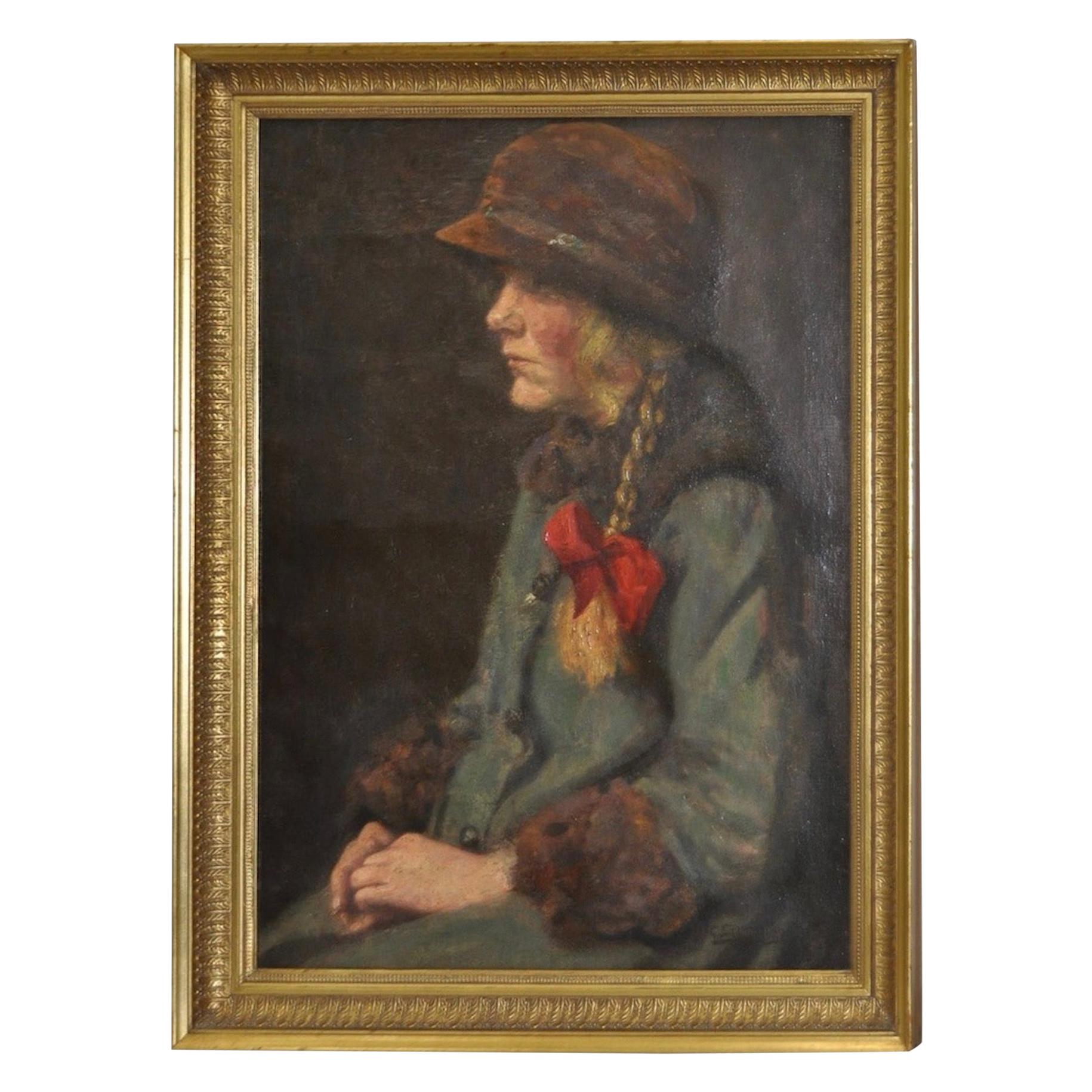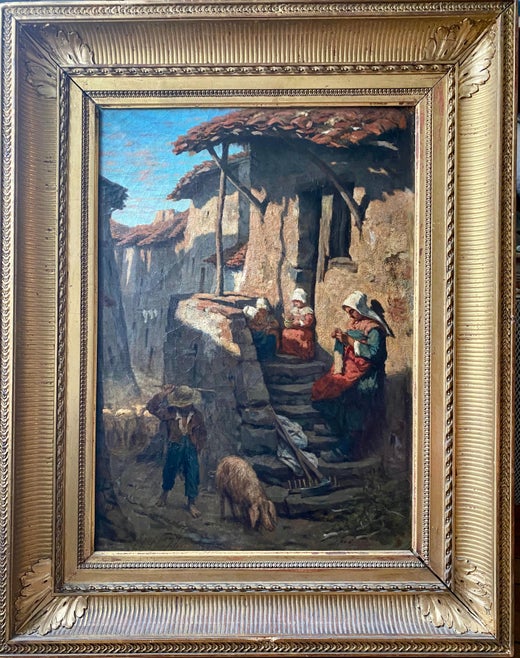Charles Joshua Chaplin 'French, 1825-1891' 'Girl with Bird's Nest' Oil on Canvas
About the Item
- Creator:Charles Joshua Chaplin (Painter)
- Dimensions:Height: 38.63 in (98.13 cm)Width: 24.75 in (62.87 cm)Depth: 2.38 in (6.05 cm)
- Style:Rococo Revival (In the Style Of)
- Materials and Techniques:
- Place of Origin:
- Period:
- Date of Manufacture:circa 1870-1880
- Condition:Repaired: The canvas has been lined providing a strong and stable support. There is some very light surface dirt with a varnish layer slightly discolored. Tucked in the lower-left corner there are some very minimal age flecks of paint loss. Wear consistent with age and use. Minor losses. A truly beautiful painting by the renown French painter, Charles Chaplin. In overall great condition. Under UV light there are a few lines of old retouching under the varnish layer. Minor flecks of paint loss on lower left corner. Frame is later.
- Seller Location:Los Angeles, CA
- Reference Number:
Charles Joshua Chaplin
Charles Joshua Chaplin’s celebrated portraits of young women are reminiscent of the 18th-century romanticism of Thomas Gainsborough (1727–88) and François Boucher (1703–70) but his subjects are nevertheless recognizable as more modern Belle Epoque women. The critical and commercial success of Chaplin’s beautifully lit portraits of sensual young women captured en déshabillé established him as one of the foremost French academic painters of the period. By the late 50s, Chaplin was being inundated with commissions from the French aristocracy requesting portraits of their wives and daughters. Empress Eugénie, the wife of Napoleon III, was also a big fan and appointed him an artist of the court. The Empress and her husband’s enthusiastic support came in handy when, in 1859, his portrait Aurora was banned by the judges of the Salon in Paris for being "too erotically suggestive". The disqualification order was subsequently overturned when Napoleon III himself sprung to Chaplin’s defense. During his lifetime, Chaplin was awarded numerous medals at the Salon in Paris and, in 1865, he was declared a Chevalier and later Officer of la Légion d’Honneur (1881). Today his works are held in the collections of the Louvre in Paris, Hermitage in St Petersburg, and the Metropolitan Museum of Art in New York.
- ShippingRetrieving quote...Ships From: Los Angeles, CA
- Return PolicyThis item cannot be returned.
- Marie Philips-Weber Oil on Canvas "Young Girl Reading a Book"By Marie (Maria) Philips-WeberLocated in Los Angeles, CAMarie Philips-Weber (German, 1845-1942) oil on canvas "Reading a Book" depicting a young maiden reading a book, within an ornate gilt and gesso frame. Signed: M. Weber Philips (l/r),...Category
Antique 19th Century German Victorian Paintings
MaterialsGesso, Canvas, Giltwood
- Karl Viktor Mayr, Austrian Oil on Canvas "An Exotic Nude Girl"By Karl Viktor MayrLocated in Los Angeles, CAKarl Viktor Mayr (Austrian, 1882-1974) a very fine Austrian oil on canvas "An Exotic Nude Girl" depicting a young semi-nude woman, revealing her breast...Category
Antique Early 1900s Austrian Folk Art Paintings
MaterialsCanvas, Giltwood
- German 19th Century Oil on Canvas Triptych of Cherubs by Ferdinand Wagner IIBy Ferdinand Wagner II 1Located in Los Angeles, CAFerdinand Wagner II (German, 1847-1927) A very fine and charming triptych group of three oil on canvas laid on board titled "An Allegory to Spring" each panel depicting different playful and joyous scenes of putti and a cherubs reminiscent of spring, love and peace. The center panel depicting a seated putto, crowned with flowers, a standing putto behind him holding a sack of arrows and a seated cherub facing him next to a watchful peace dove on top resting of a flower bouquet. The left panel depicting a seated putto next to a standing putto with a freshly harvested apple. The right side panel depicting a standing cherub holding a fig branches with leaves. All three-in-one panels within individually carved giltwood frames. All panels signed at the lower left: Ferd. Wagner, circa 1890. Ferdinand Wagner II (German, 1847-1927) was the son of Passau Ferdinand Wagner Senior, a teacher at a vocational art school who began training him professionally at a young age. After traveling to Italy in 1867-1868, he continued with his art studies at The Munich Academy of Arts led by Peter Von Cornelius and Julius Schnorr...Category
Antique Late 19th Century German Rococo Revival Paintings
MaterialsCanvas, Wood
- Attributed to Charles Edward Hallé "Mother and Child" Oil on CanvasBy Charles Edward HalléLocated in Los Angeles, CAAttributed to Charles Edward Hallé (British, 1846-1914) "Mother and Child" oil on canvas. The Victorian era artwork depicting a young mother holding her joyful infant child, within a carved gildwood and gesso frame. (Relined). Signed (l/r): C.E. Hallé, circa 1870. Charles Edward Hallé (British, 1846-1914) Born in Paris, the son of Sir Charles Hallé...Category
Antique 19th Century English Late Victorian Paintings
MaterialsGesso, Canvas, Giltwood
- Charles Edouard Edmond Delort Oil on Canvas "Game for the Cardinal"By Charles Edouard Edmond DelortLocated in Los Angeles, CACharles Edouard Edmond Delort (French, 1841-1895) oil on canvas "Game for the Cardinal", depicting a seated cardinal behind an ornate French Louis XV roll-top Bureau du Roi, after the model by Jean-François Oeben currently at Versailles, a young boy delivering a game bird as a gift, all inside an ornately paneled and upholstered wall room with parquet floors and centred with a white bear skin rug...Category
Antique 19th Century French Rococo Paintings
MaterialsCanvas, Wood
- Pietro Gabrini Large Oil on Canvas "Three Singing Beauties"By Pietro Gabrini 1Located in Los Angeles, CAPietro Gabrini (Italian, 1856-1926) a very fine and large oil on canvas "Three Singing Beauties" depicting three cheerful Village young maidens walking through a road path while embr...Category
Antique Late 19th Century Italian Baroque Revival Paintings
MaterialsCanvas, Wood
- Charles Chaplin (French, 1825-1891) Portrait de la famille GrosBy Charles ChaplinLocated in Los Angeles, CACharles Chaplin (French, 1825-1891) Portrait de la famille Gros, placed in an ornate hand carved gilt wood frame. signed and dated 'Ch. Chaplin. 1860' (lower left) oil on canvas Dim...Category
Antique 19th Century French Neoclassical Paintings
MaterialsCanvas, Wood
- 1980s Spanish Oil on Canvas Birds Painting with Bamboo FrameLocated in Marbella, ES1980s Spanish oil on canvas birds paintings with bamboo frame. Frame measurements: 95 x 68.5 x 2.5cm.Category
Late 20th Century Spanish Paintings
MaterialsCanvas
- 1980s Spanish Oil on Canvas Birds Painting with Bamboo FrameLocated in Marbella, ES1980s Spanish oil on canvas birds paintings with bamboo frame. Frame measurements: 99 x 67.5 x 2.5cm.Category
Late 20th Century Spanish Paintings
MaterialsCanvas
- 1980s Spanish Oil on Canvas Birds Painting with Bamboo FrameLocated in Marbella, ES1980s Spanish oil on canvas birds paintings with bamboo frame. Frame measurements: 96 x 66 x 2.5cm.Category
Late 20th Century Spanish Paintings
MaterialsCanvas
- Charles Levier Still Life Oil on Canvas PaintingBy Charles LevierLocated in Miami, FLLarge nautical seascape oil on canvas painting by Charles Levier. Window to Corsican port featuring a bowl of fruit leading one's imagination that the artist was sitting at a table looking out the window while producing this magnificent work of art. This painting is a masterful work and is perfect for those who have an affinity for abstracts, post-impressionism, cubism, nature, and nautical works. Painted in the manner of some Bernard Buffet works of art. Professionally framed, circa 1965. Framed Measurements: 40" High x 1/2" Deep x 34 1/2" Wide This Charles Levier oil...Category
Mid-20th Century American Mid-Century Modern Paintings
MaterialsPaint, Wood, Velvet
- Carl Stilling "Dutch Girl" Oil on Canvas, circa 1924Located in San Francisco, CACarl Stilling (Denmark, 1874-1938) "Dutch Girl" oil on canvas, circa 1924 Remarkable 1920s painting of a young Dutch girl with her braided hair coming out from under her favorite ...Category
Early 20th Century Danish Paintings
MaterialsCanvas
